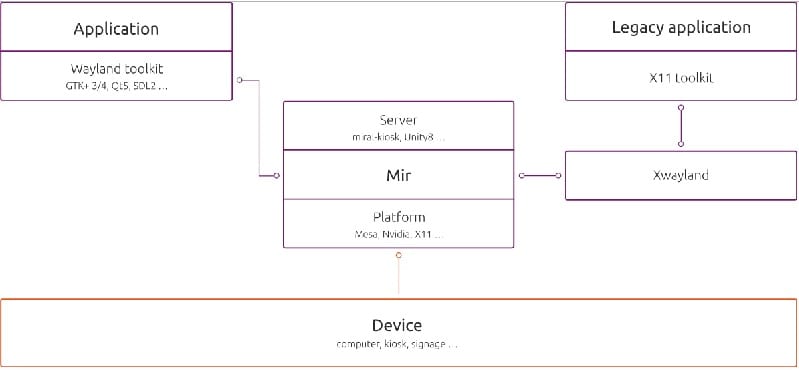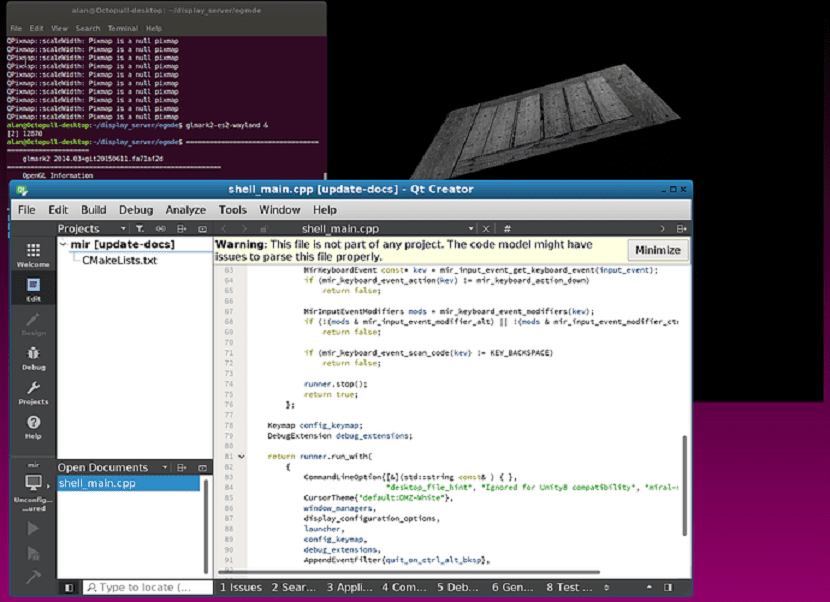
Recently the folks at Canonical in charge of developing the project unveiled a new release of this display server.
As some of you may know Mir is a computer display server and recently a Wayland composer for Linux which is being developed by Canonical Ltd.
It was planned to replace the currently used Ubuntu X window system, however the plan changed and Mutter was adopted as part of GNOME Shell.
About Mir
Mir is based on EGL and uses part of the infrastructure originally developed for Wayland, such as Mesa's EGL implementation and Jolla's libhybris.
The compatibility layer for X, XMir, is based on XWayland
Other parts of the infrastructure used by Mir originate from Android. These parts include the Android input stack and Google's Protocol Buffers.
Mir currently runs on a variety of Linux-powered devices, including traditional desktops, IoT, and embedded products.
It enables device manufacturers and desktop users to have a well defined, efficient, flexible and secure platform for their graphical environment.
Mir can be used as a composite server for Wayland, allowing you to run any application that uses Wayland in Mir-based environments (for example, compiled with GTK3 / GTK4, Qt5 or SDL2).
The installation packages are prepared for Ubuntu 16.04 / 18.04 / 18.10 (PPA) and Fedora 27/28/29.
New Mir 1.1 release
As it was said in the beginning it has been published recently the new release of the Mir1.1 display server.
Along with this new version of Mir a new mir-graphics-drivers-nvidia package has been released with the eglstream-kms component adding direct support for proprietary NVIDIA binary drivers.

With which the expansion EGLStreams are implemented (supported by NVIDIA drivers, as of the 396 release).
In addition to EGLStreams support, The Mir 1.1 codebase includes several code fixes related to provisioning the build with the Musl system library and using Mir in the Ubuntu Touch environment (which is developed and maintained by the UBports project).
On the other hand, among the projects related to Mir, the Mir-kiosk minimal shell based on Mir continues to be tested.
This Shell is intended for the separate launch of individual applications in Internet kiosk mode (the interface is limited to one application).
mir-kiosk
I looked at pProvides a stable, well-tested, high-performance platform with input capability touch, mouse and tablet. Provides secure client-server communications based on Wayland.
Mir handles the initialization and configuration of a wide range of graphics and input hardware and seamlessly deals with hardware quirks.
The Mir libraries provide most of the window management, which has been customized to ensure that the applications are full screen by one of the programs.
The mir-kiosk project takes this program and packages it as a plug-in for ease of use.
Mir-kiosk comes in the form of a snap package and can be useful for creating demonstration stands, electronic billboards, self-service terminals, automotive information and entertainment applications, smart meters and indicator displays for home appliances.
Installation:
sudo snap install mir-kiosk
egmde
Built on Mir, the most functional user shell, Egmde, has not yet been adapted to use the support provided by Mir 1.1 for NVIDIA drivers, but it is promised to be implemented within a few weeks.
Mir extract hardware differences from shell authors (deals transparently with hardware quirks) and integrates with system components such as receivers.
Mir window management is built in and yet extremely customizable by shell authors using a simple high-level API.
Egmde accepts the Mir window management defaults and does the bare minimum to show you how to build on that.